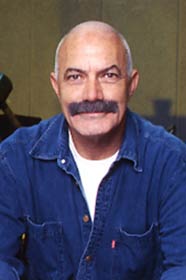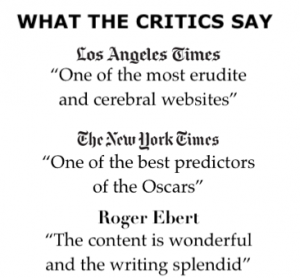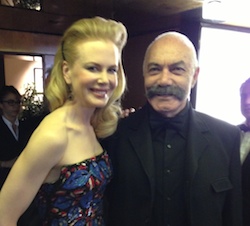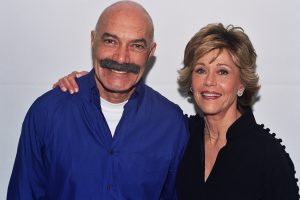Netflix acquired worldwide rights for To the Bone for an estimated $8 million after the film’s premiere at the 2017 Sundance Film Fest. To The Bone, set to premiere on July 14 on Netflix, tells the story of Ellen, a 20-year-old woman suffering from severe eating disorders.

A trailer for the film, released on Tuesday, shows Ellen performing a string of harmful behaviors well known to those who have wrestled with disordered eating: calorie counting, food restriction, and obsessive exercise.
Preparation for Role
Lilly Collins: I have been very outspoken recently about my own experiences with eating disorders that I went through starting as a teenager. So I was already doing research from reading my own journals when I was younger, and talking to friends and family and looking at old photos, before I even received the script.
Ironically, I was writing the chapter in my book about eating disorders a week before I got this script. And to me, if that’s not a sign from the universe saying this is something you need to talk about, I don’t know what is. When I got the script, I went with Marti to a Anorexics Anonymous group, where we spoke to young women in recovery, and I spoke with medical doctors and the head of the clinic at UCLA to get more of the facts and more of the medical side of it. I watched documentaries and really drew a lot from my own experiences, but at the same time was able to separate and say okay, this is a character and it’s semi-autobiographical of Marti Noxon, but it’s very much one character’s story. So as awesome as it is as an actor to be able to kind of include your own experiences, it’s also a separation of actor and person.
Brave and Risky Project
LC: What I learned, when I was 16 going through this, I did not surround myself with the medical facts. I felt at that point that I could kind of handle it on my own, and everyone has a different form of recovery and everybody has a different experience with the disorder. But I didn’t surround myself with the amount of facts that this movie provided me with. So in the preparation for this, I talked to doctors and went to these groups and I really got an education on it in a way that I wasn’t expecting. And, all I can say is when I signed on for this movie, when I first read it, I had this gut instinct, having just read my chapter on it, that I needed to do this. I needed to do it for myself, I needed to do it to bring this story to more people and I didn’t care if no one ended up seeing the movie and I just knew that I was going to evolve a lot throughout this experience as myself through the character, but also through Marti and meeting these people on set. The people that helped me in the pre-production stage. As an actor playing a role like this, of course there are nerves involved, portraying someone that is also a writer-director, is something that I have done a couple of times now and there is a little pressure to that, but also of course stepping back into the shoes that you once wore that weren’t through a positive experience, is going to be something that you think about a little more. But I was surrounded by the nutritionist, my mom, all my friends, cause we shot in Los Angeles, Marti and all the producers, and I was held accountable every day. And I felt I was strong enough to tell this story and if anyone is going to tell it, I feel like it was meant to be me. I am super proud of what we did, and if we continue to get conversations like this about a disorder that is so rarely talked about, then our mission has been accomplished. And that is the point of my book. So when those two things came together, it was a no-brainer to me.
Eating Disorders
LC: I think both Marti and I and the rest of the cast and crew really set out to make a movie that prompts conversation about a subject matter that is so stigmatized and considered taboo in today’s society. But is becoming more and more prevalent among women as well as men, and we wanted to create something that hopefully created empathy for people that didn’t necessarily know about the disorder, for those also suffering and going through to know that you are never alone in your struggles and that asking for help is never a weakness, it’s a strength. And, just to kind of better inform people of the different sizes and shapes and what the disorder looks like. It takes all sorts of forms.

Losing Weight
LC: They did not ask me to lose weight. There never had a number in mind, no one set a goal for me. I as an actor, took it upon myself to want to emulate the character as much as possible. I think as an actor, you gain weight, you lose weight, you change your hair color and you change yourself physically and emotionally for the different parts that you play, and this was an opportunity for me where one of my life’s missions, which I feel like now is bringing this topic to more people and coming out and really talking about it, when a life’s mission and the mission of a movie blend together so beautifully, that’s a moment of magic. This is what I saw this film as. I wanted to pay homage to the 16 year old girl that I was going through this by emotionally going back to that place and if that took physically altering a little bit of myself to go there. I wanted to do that for the character as well as for myself. So yes, there was weight lost, but it was all done under the supervision of a nutritionist and my mom, my director-writer, the producers, I was very much in a safe environment. But it was a choice as an actor to make to emulate this character.

Relationship to Food, Pressures to Stay Thin
LC: I definitely related a lot to the script. That’s why I responded so positively to it, because I read it and thought wow, the person that wrote this definitely experienced it. There was a sense of humor and the way that it was written was just so specific to someone who would have gone through it. There were some situations that I could definitely relate to and there were some that I had never experienced and those were ones that actually happened to Marti, which some people may think may be characterizations of the disorder, whereas in fact, Marti has been very outspoken that they are kooky moments, but they actually happened to her. So luckily there was a very open communication on set, and within any moment that was unfamiliar to me or was familiar, Marti encouraged us to ask questions and talk about it. So I felt again, very safe and nurtured in that environment and as an actor, really when you get to play a role that you can emotionally connect with on that type of level and give of yourself to the character, that’s a gift in a sense. And you are always trying to relate to your character in some way, to bring it to life. So for this one, I just happen to be extra sensitive to Ellen, but I think it better informed me of the experience and the movie was extremely therapeutic for me as well. I learned a lot more about myself by meeting Marti and playing Ellen. And now, I just recently did the cover of Shape, which was a huge thing for me because six to eight months ago, magazines didn’t want to put me inside, on the cover or inside, a lot of them, because they didn’t want to put out a negative image, even though that they knew that I looked the way that I did for a film, they really kind of stood up to that, which I really thought was kind of commendable. But now, to be able to be on the cover, talking about my experiences, is really empowering and I mentioned that to me, healthy used to represent what I thought perfection looked like, and now it’s how strong I feel, and it’s that shift of food is fuel and not punishment. And for this movie, I was hired as an actor to do a job and nothing to do with my experience with the disorder. Marti didn’t know that when she met with me for the first time. So in order to do the best job that I could in this movie, I had to be sustaining energy and that’s why Marti had a nutritionist on board, and we were adamant that there was a program in place that I never missed days of work and I was never overly tired and I never missed my lines, because I was hired to do a job. You want to be the best version of yourself that you can be, you need to fuel yourself. And you need to fuel your body. It took me awhile to get there, and it’s not always easy, but I think that shift in mentality is super important.
Impact of Art Work
LC: A survivor of eating disorders gave me a drawing, it was the artist in the film, there’s a couple of drawings that a specific artist drew, who was a survivor and a lady in recovery. Actually, Alex Sharp my co-star gave me this drawing of hers. And it was very representative of her journey and her experience and her coming back to life, and it mimicked somewhat the movie with the tree at the end. But, that piece of artwork meant so much to me having experienced similar things to her. But, also because of the movie and the tie-in and that to me is now one of the dear pieces I have. And that really affected me, just to see someone’s emotions put so perfectly into a drawing, and you could see the emotion and you could see the story just down in front of you and it was really touching.
 Photo: The Last Tycoon
Photo: The Last Tycoon
Appearing in New Version of The Last Tycoon
LC: Well I think the Pilot itself is more of the book, cause F. Scott Fitzgerald passed away while writing it, so at the end of the book, you are kind of left to go off and do almost, you can take liberties once the book is done and just see where you want the story to go. The Pilot is more representative of the book in that where the book ends, almost the Pilot ends. But I think there’s so much to be played with within the Golden Age of Hollywood and Billy Ray and all the producers and writers on it, wanted to be able to insert history into the show, but also take it off into a different place. But it’s really served as the basis for the story and to pay homage to old Hollywood and get to show a side of it that I think a lot of people haven’t seen and yes it’s glamorous, but at the same time, there’s a lot of things that I didn’t know existed in the 1930s, especially that my character gets to be a part of, which was really exciting.










